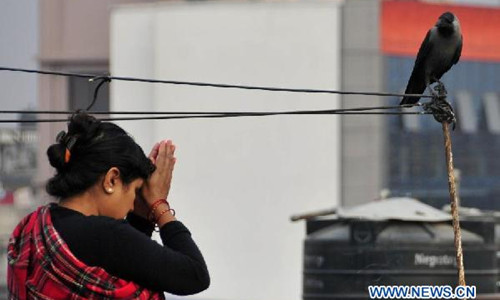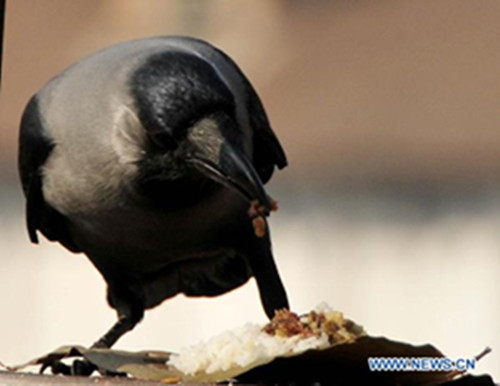Nepal celebrates unique Hindu festival "Tihar"


Nepal started celebrating Sunday the Hindu festival of lights, called "Tihar", with people decorating their homes with garlands and decorative lights and greeting each other with "Happy Tihar" or "Suva Dipawali".
The second longest festival after "Dashain" that ended a fortnight ago, "Tihar" is celebrated for five days. Each day is dedicated to different religious figures including cow, crow, and dog, which signifies deep relation between human beings, god, and animals.
In this festival of lights and flowers, human are also worshipped. A day is dedicated to siblings when sisters worship their brothers and pray for their long life.
The markets here are already overcrowded with people buying garlands, sweets, colors and lights for the festival. Street-side vendors, shopkeepers and ambulant peddlers will remain busy for the five days in Kathmandu and other cities of Nepal.
One Kathmandu resident here said that "Tihar" is his favorite festival since the city does not sleep during the five days of celebration.
"We get to sing, dance and celebrate all night and all the lighting decorations around really amaze me," he said.
According to Paran, the Hindu religious book, Yamaraj, the god of death visits his sister Yamuna and stays with her for five nights. Then, Yamuna worships her brother in these days when the god of death has put off his schedules, depicting strong bond among siblings.
Sunday, the first day of "Tihar", was dedicated to the crow, the messenger of death. In this day, crow is fed well and worshipped so that it will not bring grief and sorrows in the family.
"When a crow appears, it symbolizes sadness. The messenger of death is thus worshipped so that it won't bring misery in the family," said Surya Prasad Dhungel, secretary at Nepal Panchanga Nirnayak Samiti, the official body that declares the dates and times for Hindu festivals. The Samiti also puts out the annual Nepali calendar.
In Hinduism, the second day of "Tihar" is dedicated to dogs, the ride of Lord Bhairava. Lord Bhairava is one of the manifestations of Almighty Shiva. During this day, a Hindu takes breakfast only after dogs do.
The four-legged ride of Lord Bhairava is worshipped, garlanded and offered with tasty treats and good food.
The third day is dedicated to a cow or Goddess Laxmi in Hindu religion. The deity is considered the goddess of wealth. On this day, cows are washed, painted with unique Hindu colors and designs and worshipped before breakfast.
This is actually the day for the display of lights and garlands as it is believed that Goddess Laxmi visits those houses which are beautifully lit and garlanded to offer a dazzling look.
People express their gratitude towards Goddess Laxmi and her resemblance and the cow for all the benefits and prosperity bestowed upon families. When the sun goes down, girls dance and sing at people's houses, sometimes for the entire night, participating in the traditional celebration called "Bhailo".
Here, they dance, celebrate, share sweets and food, and collect money from neighbors and villagers for religious purposes.
The fourth day of the festival is dedicated to cow dung. Cow dung is very useful in Nepal for making methane gas for lighting homes. Some Hindus from different communities also worship oxen on this day.
The fifth and last day of "Tihar" is called Bhai Tika, where sisters worship brothers and pray for the god of death to provide a long life for them.
By offering garlands prepared by their own hands, sisters then thank their brothers for the protection they give. In return, the brothers offer gifts and money to symbolize a deep relationship between brothers and sisters.